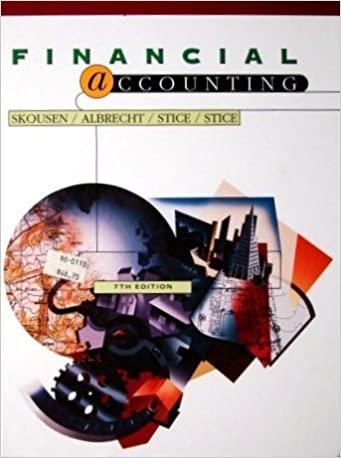Problem 3-5 - Analyze the effects of transactions on the six components of the financial statements Dr. Evan Proudfoot opened the Proudfoot Foot Care, Inc, for the treatment of foot problems. The business transactions for January are as follows: Jan. 2 Dr. Proudfoot invested $440,000 cash in the business in exchange for 10,000 shares of capital stock. Jan. 6 Land and a building were purchased for $240,000. The cost of the land was $100,000 and the cost of the building was $140,000. A cash down payment of $80,000 was made at the the of purchase. Proudfoot signed a promissory note for the remaining amount. Jan. 8 Medical equipment was purchased for $35,000 cash. Jan. 15 Office furniture was purchased for $22,000. Proudfoot paid $12,000 at the time of the purchase. The balance was due on open account in 30 days. Jan. 21 Dr. Proudfoot medical services in the amount of $4,800. He received $2,200 in cash, and $2,600 was billed on account (due in 30 days). Jan. 29 A $1,200 bill was received for advertising expense incurred in January. The amount is due on February 14. Jan. 31 Paid employees $3,200 for salaries earned in January. Instructions: Analyze the effects that each transaction will have on the following six components of the financial statements for January. Use the format in the grid below. Use I for increase, D for decrease, NE for no effect. The January 2 transaction is provided as an example. (Note: If a transaction has more than on effect on one of the components below list the net effect. For example, if a transaction increased one asset by $20,000 and decreased another asset by $8,000 its net effect on assets would be an increase (I)). Problem 3-1 - Analyzing transactions and Their Effects on Account Balances In May 20x5, Sue Smith organized a corporation to provide home and apartment cleaning services. The company, called Sue's Cleaning, Inc., began operations immediately. Transactions during the month of May were as follows: May 2 The corporation issued 50,000 shares of capital stock to Sue Smith in exchange for $100,000 cash. May 4 Purchased a truck for $30,000. Made a $10,000 cash down payment and issued a note payable for the remaining balance. May 5 Paid $1,500 to rent office space for the month. May 9 Billed customers $11,500 for services performed for the first half of May. May 10 Paid $4,800 in salaries earned by employees during the first half of May. May 19 Paid David's Auto Shop $400 for maintenance and repair services on the company truck. May 20 Collected $6,400 of the amounts billed to customers on May 9. May 28 Billed customers $14,200 for services performed during the second half of the month. May 30 Paid $10,200 in salaries earned by employees during the second half of the month. May 30 Received a $220 bill from ABC Supplies for cleaning supplies purchased and used in May. The entire amount is due by June 30 . May 30 Declared a $1,400 dividend payable on June 22. May 31 Made a partial payment of $110 for the amount owed to ABC Supplies from the second May 30 entry. The account titles used by Sue's Cleaning are: Instructions Prepare an analysis of each of the above transactions which shows which accounts will change as a result of each transaction. The May 2 transaction serves as an example of the form of analysis to be used. May 2 - Cash has been invested in the business therefore the asset Cash was increased by $100,000. Capital Stock has been issued to the owner, Sue Smith. Increases in ownership investment are recorded by increasing the Capital Stock account by $100,000. Summary for this entry: Cash +$100,000, Capital Stock +$100,000








